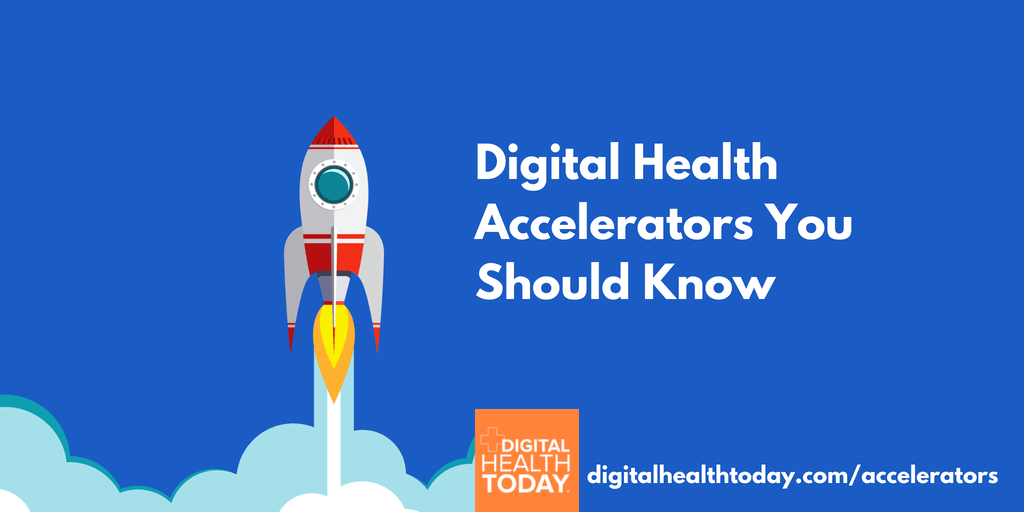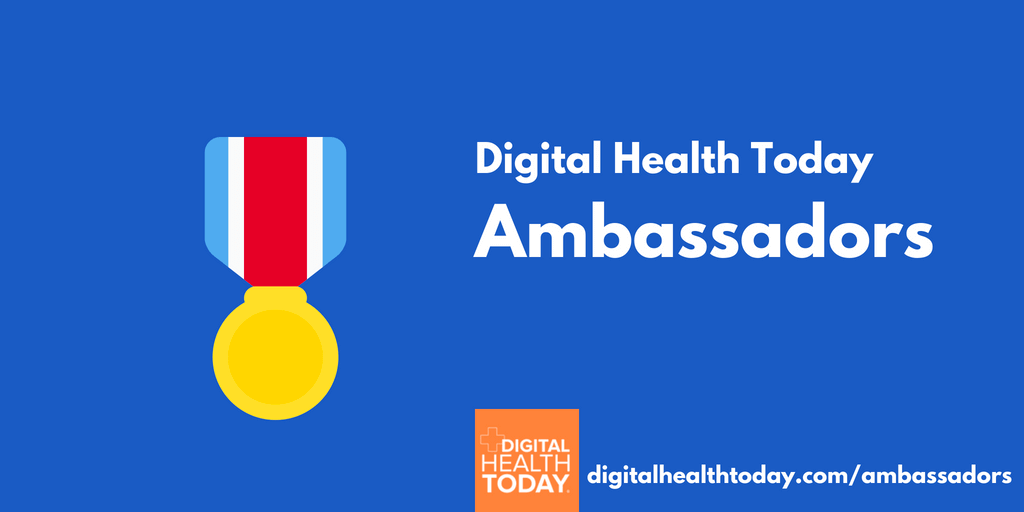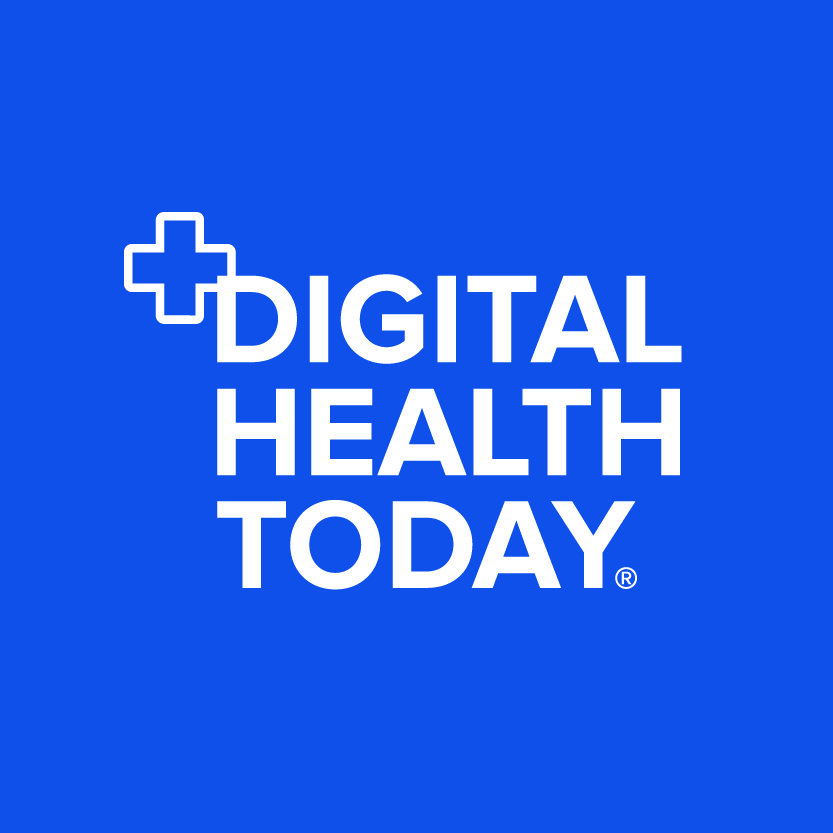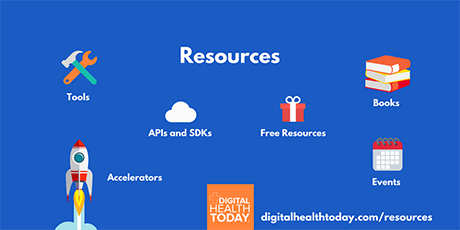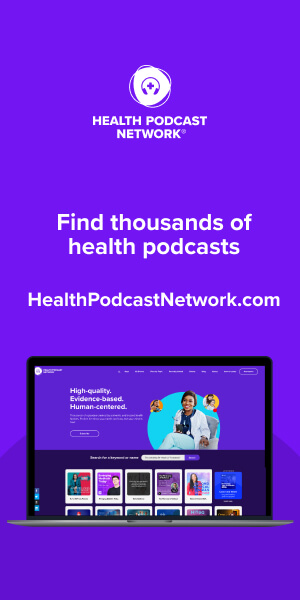Transcript
0:03 Eugene Borukhovich
Welcome to the Digital Therapeutics Edition of Digital Health Today. I’m your host, Eugene Borukhovich.
In the last episode, we virtually travelled to Germany to have a deep dive into the Digital Healthcare Act with none other than Christian Dierks. Christian is the managing partner of Dierks+Company and was absolutely instrumental in getting the DVG off the ground.
In this episode, I’m super excited to speak with Jonas Duss, co-founder and US CEO of Kaia Health, a Munich-based company that has expanded to the United States. Kaia, in their own words, is a proven MSK (musculoskeletal) solution that combines human care with superior technology to achieve better outcomes. Since we recorded the episode in January, Kaia unveiled their complete MSK care solution with Kaia Gateway and premium partners.
But before we dive in, I met Jonas years ago in Berlin as Kaia was exploring pharmaceutical partnerships. I absolutely loved what the team was doing in COPD, but unfortunately could not convince internal stakeholders to move forward at that time. My first impression of Jonas as a kind, caring human being, but also as a methodical and highly driven entrepreneur, only strengthened as I got to know him over the years. And now we jump to my conversation with Jonas.
I am here with Jonas Duss, co-founder of Kaia as well as CEO of their US business. Welcome to this podcast Jonas and would love to have the audience get to know you a little bit. What’s your background and how did you come to digital therapeutics? And even more specifically, Kaia?
1:45 Jonas Duss
Absolutely. Thanks so much for having me, Eugene. It’s a pleasure. Yeah, my name is Jonas Dusss. I was born and grew up in Switzerland, which is probably why I love the outdoors and adventure sports. I’m an avid skier and mountain biker. At the same time, I feel a little bit Spanish at heart. I lived there for a while and really fell in love with the people and the culture there. Where you, lucky man, are living right now.
2:09 Eugene Borukhovich
That’s, that’s right. I’m enjoying it.
2:11 Jonas Duss
Congratulations, you did something right. So my educational background is originally mechanical and chemical engineer by training. I’ve always felt the urge to want to build something that would have a sustainable impact. So I first focused on research around renewable energies, material science around solar thermal reactors for solar fuels, drilling technologies for geothermal power plants, big quantitative imaging for things like drug discovery. The recurring theme really was having an impact via technology that pushes our boundaries in a sustainable way. The chemical engineering and imaging research sparked my interest in the pharmaceutical industry and healthcare in general. There was a medical imaging challenge, and circumstance and curiosity wanted it that I, in the end, landed in the digital therapeutics space.
3:09 Eugene Borukhovich
Amazing. I didn’t know that you were almost a rocket scientist. I’m kidding. I know you joined Konstantin [Mehl] pretty early; how did you actually end up at Kaia with Konstantin?
3:31 Jonas Duss
Yeah, so it’s an interesting story, because I originally joined Kaia via our digital therapeutic for COPD, so our second product. David Boutellier, my COPD co-founder so to say, [and] myself, we came up with an idea to build an exercise device that would help COPD patients exercise more regularly but feel safe while doing so. Because one of the main problems around COPD is that it is a condition that can be managed by exercising more, but exercising means pushing oneself to a state of of breathlessness, which can cause anxiety in these individuals, which in turn can lead to resisting to do more exercise, which in turn again increases the probability of suffering breathlessness and even lower physical exertion. We wanted to break that cycle by building an exercise device originally that would take that breathlessness state into account and support the individual more or less. For example, like an electric bike with a feedback loop and adjusted support.
So we started talking to pulmonologists about that idea [and] realized there was an existing therapy– pulmonary rehabilitation– with a broad body of evidence but low accessibility. We saw that there was a big unmet need and realized maybe the device is not the right way to go, but maybe we should actually digitize the treatment, deliver it through the smartphone.
That’s the stage we were at– we had a concept and first clinical partnerships– where we met Konstantin at a conference doing something very similar in the pain space. Kaia had progressed already a little further than that we were, so we decided to sit with the folks of very early Kaia in the office for a few weeks. We figured pretty quickly that the chemistry was right. Then we made a deal, brought our COPD concept to Kaia and brought it to life with the existing team there, with the existing infrastructure, which was an amazing time. Within two months of officially joining, we had the COPD digital therapeutic available as a regulated device, and eventually took on roles (both David and myself) that went across the two conditions, more general roles; David leaving the product organization and myself leading the commercial organization.
5:55 Eugene Borukhovich
Awesome. As these deals happen, you guys are sitting in the room, and I’m sure you were talking about what’s the business hypothesis. How does Kaia solve the patient challenges and problems, but also from a market entry perspective? And given the fact that you guys started as Kaia [in the] Swiss and German and the DACH region, maybe you can talk a little bit about the business hypothesis as you guys were sitting there making that deal between the two– and the go-to-market [plan].
6:31 Jonas Duss
Originally, the reason Kaia was founded was because Konstantin himself was suffering from chronic pain and studying in New York at Columbia and realizing that it’s not easy to get the right treatment. A lot of chronic pain sufferers don’t get a sustainable treatment; they get prescribed painkillers, physiotherapy, surgery, a lot of imaging is being done, too many opioids are still around. Many of these solutions are for acute pain and only really provide temporary relief. So this, together with the very high prevalence of chronic pain, was what motivated us to tackle this market.
Knowing how many people have absentee days at work, it’s just a huge burden on the economy, on the healthcare system, and also on the individual. It really impacts your quality of life. There was already a very broad and solid body of evidence around more mind-body holistic therapies, such as multimodal pain therapy– they were just very expensive, and you have to do them in a three, four-week inpatient setting. We knew if we could make these therapies more accessible to people more broadly, there was going to be (eventually) a business model around that. Maybe a little bit naively, [we] went first after directly the consumer, getting the consumer to pay out of pocket.
8:08 Eugene Borukhovich
Especially in the DACH region, right. Europe in general, and Europeans, there’s not much of a consumer market in healthcare. I would argue that, but that’s a separate podcast.
8:21 Jonas Duss
Yeah, absolutely. I mean, people in the DACH region probably are already a little bit skeptical around any kinds of digital subscriptions, or paying for apps or any digital services, more so than in other geographies. Also, data privacy is a very big topic that is on people’s minds. However, we did see people being very successful with the therapy and paying for it out of pocket– while in parallel, selling to private payers in Germany and furthering our research to build other clinical and health economic evidence. It did allow us [in] this primary phase to continuously iterate the usability aspect of the product and get a very good problem-solution fit, while we were still figuring out the piping around reimbursement, billing, and who would be the economic buyer at scale. We did realize direct-to-consumer wasn’t going to be, at least right now, a scalable way of building attraction long-term.
9:25 Eugene Borukhovich
So you put it out there in the app stores to the consumers. As I was living at the time in Germany, I do remember some sick funds jumped on board– which, for our listeners in the US, those are insurers in Germany. Obviously, that also helped you get some additional data for that evidence. You mentioned reimbursement. All eyes have been on DiGA in Germany; there are now 10 and counting companies [eligible for reimbursement on DiGA]. If you can talk about some of that pricing– are you even an applicant in that process?
10:03 Jonas Duss
I can’t make a public statement right now about the DiGA pricing.
10:08 Eugene Borukhovich
Understood.
10:09 Jonas Duss
But I can say that we’re currently applying to be listed. Absolutely. What I can also mention is that regarding our journey (or path to reimbursement), as you know, when we started, DiGA was not yet in place. McKinsey actually wrote a good article and mentioned our journey as an example of the path to reimbursement in Germany: going through the stages of a trial phase (MVP-type product); to clearing the necessary regulatory hurdles; to producing the clinical evidence necessary to sign contracts with payers, in combination with creating real-world evidence, and eventually the health economic evidence that is necessary for long-term reimbursement.
10:58 Eugene Borukhovich
Yes, we’ll ask for that link and add it to the show notes for our listeners. So you’re now sitting in the United States of America, in New York. As you guys have been growing and got some early but larger successes in the DACH region (and I would say in Europe in general), what was the decision-making process for Kaia to enter the US market? Because obviously, the systems are very different, the money flows are different.
11:30 Jonas Duss
You know, with devices, and especially with software, you’re navigating a global market. The US is one of the most important markets. Also, we did see there was a very big unmet need here, and clients who are willing to adopt new technologies. I think when we started off, it was clear that eventually we would want to go to the US and offer our services here. So I think it wasn’t really a decision that was made later, I think the decision was made right when the company was founded. The question was just, how long do we iterate, problem-solution fit within Germany? Also the regulatory hurdles in Germany are very strict– in certain ways, stricter than in the US– so we knew if we could sell to a German health plan, we would definitely be able to replicate the same thing in the US. It was more a matter of when, and not so much if.
Our pricing is slightly different, adapted to offering our services here in a slightly different flavor, as our channels are more enrollment-based, more driven by the communication at the employer rather than the payer, as it was the case in Germany. So I would say definitely, the reimbursement and delivery model has a slightly different flavor in each geography that you’re operating in. But in the end, again, I think you’re playing in the global market, and you got to go after the big markets where there is opportunity.
13:06 Eugene Borukhovich
So let’s jump back to the product. Because I think for many people, what the heck is a digital therapeutic? What is that consumer/patient experience? Walk us through what that look[s] like. You don’t have to pick a geography, just walk us through a little bit what it looks like, what it feels like.
13:34 Jonas Duss
Yeah, so typically, an individual would find out about us from the material that we send out together with our clients, such as a health plan or an employer. The individual will create an account, fill out a medical assessment. We then use that data to create a comprehensive medical profile and assign the right therapy content and difficulty level for the physical exercises to that user. They then learn about their current baseline and pain profile/condition profile. They get a coach assigned, a personal coach, and then we inform them about the therapy plan, which we created for them. They then start their first Kaia experience with completing an educational module, as well as a playful warm-up with our emotion coach, which is a computer vision algorithm giving feedback on exercise execution.
After that, the user jumps to their first physical exercise session, which is tailored to their profile. During the exercise, we can gather data and further customize the therapy to that individual. After completion, they can also do one of our relaxation techniques, and then they’re free to return to their second day whenever they find the time again.
The coach is also available to talk to any time directly and can help users mainly with the motivational aspect, setting SMART goals to build powerful habits so that people become long-term successful in using this solution, versus the in-patient setting where you go in. That behavior change aspect is much more central for us than maybe in the traditional healthcare system, where you get something prescribed, and you get it for a certain, limited time period, and then you don’t really make it part of your life. That’s the main problem of treating chronic conditions.
15:39 Eugene Borukhovich
I loved your term of motivation versus what I would say in the molecular space, “adhering.” Be motivated [in] setting goals versus swallowing a pill and adhering to it. I’ve been fascinated around trying to compare digital therapeutics [to molecular therapeutics], because it is a therapy, and there are active ingredients in both. What [do] you guys consider the active ingredient in that process?
16:21 Jonas Duss
Yeah, great question and great topic. We could probably do another episode on that one alone. We have built all of our evidence around the digital aspect, the software being that molecule. That aspect would fall into the category of prescription digital therapeutics. Oftentimes, all the development and all the research is being done pre-market, and then you go through the regulatory hurdles and go to market at once. I think that’s where we differ slightly from that approach, just because we did iterate that usability aspect in the early days with consumers, because we do believe that it is extremely important to get constant feedback from a constant influx of new users. Only that, in the end, makes this therapy successful because people will long-term adhere to it, because it is a nice user experience.
17:25 Eugene Borukhovich
Be motivated to use it.
17:27 Jonas Duss
Yeah, exactly. So we built our evidence around the digital intervention. But that motivational piece that you just mentioned, we just realized as we were developing the product that there definitely is still a space for humans. Certain elements, we still cannot really automate. We’ve been very careful to create our evidence in prospective trials around the software. The human aspect currently is non-interventional; it is about motivation, about keeping people “adherent,” to use that wording. But we do believe that what we can automate, we do automate. I think that’s also our responsibility in terms of saving more costs. But for where we know the human element is the right one– such as motivation, but also referrals to the right next point of care– that’s really where we believe with that right blend, we can add efficiency to the current existing traditional health care system. That’s why we chose to have that blend.
18:35 Eugene Borukhovich
Perfect. So there is a pure prescription digital therapeutic, then there’s surrounding it in health coaching to motivate these individuals to continue on that journey. Then there’s the full disease management 2.0 market– if we think about the Livongo and Omadas of the world. Where’s your head around where this is all going? Digital therapeutics and disease management 2.0– merging? Not merging?
19:13 Jonas Duss
Yeah, there’s so many elements in there. I like to split it up; it depends what indication you’re treating [and] it depends how much risk is involved, because the prescription aspect oftentimes depends on what risk you’re actually exposing somebody to, and therefore you need a prescriber.
It just also depends on the local regulations. We’re pursuing different flavors of both models with two indications in different geographies. They’re quite different in terms of delivery and reimbursement. So I would say, building on the answer of the question before, we’re somewhere in the middle; our evidence is around the digital therapeutic, the human element is complementary, and where we can, we try and integrate with the traditional healthcare system to make disease management more efficient. It also has to do with, are you treating [a] highly prevalent condition or not? If you have a prevalence of 1% in a workforce, it probably doesn’t make sense that you send reminder emails to the whole workforce, “please go get this digital therapeutic.” Especially if it’s a very debilitating disease, you should see a medical professional, and that should be the path of how you get prescribed your prescription digital therapeutic.
With chronic condition management, especially with conditions where the treatment is conservative and relatively low-risk– such as in chronic pain– I believe it makes sense to work with this enrollment model, where you offer this to all the employees at a company. You try to catch as many as possible and then allow people to self-select with the right triage process in the product, so you can further minimize risk.
21:02 Eugene Borukhovich
Let’s continue a little bit on that topic. Digital therapeutic companies have been cuddling with pharmaceuticals. In the good old days, with me wearing my old hat [in the pharma industry], we had a number of discussions [and] I couldn’t convince other stakeholders. But as you guys entered with the sick funds in the DACH, working in the US through the employer and other models, you guys do have a deal with a pharma player. I think this is probably near and dear to your heart with COPD. Where do you see that relationship of a digital therapeutic and pharma going? One swallows the other? Because you guys as a digital therapeutic company know a consumer/healthcare experience? Or vice versa?
21:48 Jonas Duss
So I think it really depends. My boring answer to all questions.
21:53 Eugene Borukhovich
It always does depend! That is true.
21:56 Jonas Duss
I think if pharma just seizes digital therapeutics to sell more drugs, I don’t think that will be the most feasible path to success. We’re only talking about digital therapeutics right now, right? There’s of course the broader category of digital health, where you can start talking about the CRO aspect of digital tools and data gathering and targeting and so on. So, when just talking about digital therapeutics, I do think they will play an important role in the prescription digital therapeutic space.
I think the question for me is less “if” but more “when” digital therapeutics are important enough for a pharma company to be treated as their own separate products with their own separate product launches, rather than marketing gadgets just to seem innovative and sell more of their traditional products. So [it’s a] question of when and who.
Also, I think it’ll come down to how bold, how innovative, how long-term a pharma company’s strategy is. My personal view on this is that sometimes smaller and family-owned or influenced companies, classically, were willing to place more bold, long-term bets than publicly traded companies that have to report on a quarterly basis. I think in the countries where the right reimbursement pathways exist, some pharma will, in my opinion, play a role earlier or later in the promotion and distribution of digital therapeutics. Maybe also the development. We’ll see.
I think it’s a matter of time, and probably many people in the pharma space would love it to go faster. But I think that has to do with the design of these mega institutions that don’t always go as fast as you’d wish.
23:53 Eugene Borukhovich
It’s time for a question from my journalistic partner on this podcast, Brian Dolan, who is the founder of Exits & Outcomes, and as I like to call him, the digital health detective. Let’s see what question Brian has for our guest today.
24:06 Brian Dolan
Okay, here’s my question. If you had to pick, name another digital health company that has helped shape Kaia’s strategy. Which other companies in digital health do you think are doing it right? And whose strategy do you admire most or have you learned from the most?
24:23 Jonas Duss
Thank you, Brian. Great question. Early on, there were a few companies that we thought were, like us, working hard to find that crucial equilibrium in digital health technology and human intervention. If I were to name one, Livongo stood out in their efforts to connect the glucose measurement device with a human support system to help them manage their condition. Managing a chronic condition is so much more complex than simply following a drug regimen. And these conditions are uniquely suited to a comprehensive approach from the digital side of ease of tracking, measurement automation, and insights, all the way to more hands-on care.
The challenge is, of course, effectively optimizing for both– a balance that we at Kaia continue to strive towards. While we are definitely a deeply technological solution, our development is always informed by the patient experience. So as part of our focus on empowering the patient to manage their condition, we also provide coaches for support, and work with partners to ensure that we are contributing to the best care path for the patient. You’ll see that evolution more prominently in the coming year, as we incorporate more options for the human elements of care to build upon our core digital therapy.
It’s an incredibly exciting time to be in digital health, and we feel both challenged and supported by so many other companies’ efforts out there. I feel like we’re in a fantastic industry with so many driven and creative people and a lot of exchange. And it really feels like an industry coming together, figuring certain things out. No one has it perfect, but we do our best to lead where we can and learn from the market successes as well.
26:05 Eugene Borukhovich
I’m gonna hop in here as well, because I think you probably learned a lot of lessons looking at Omada and other players early on. You guys are taking your own path. We started with who you are, and I would like to end this podcast with what makes you get up in the morning. What is your why?
26:26 Jonas Duss
Yeah, that’s a great question. Actually a really important one for me personally. I often boil it down to the DALYs, decreasing the number of DALYs in this world. DALY is a term for “disability adjusted life years”; it’s based on the hypothesis that the most appropriate measure of the effects of chronic illness is time lost due to premature death, and time spent disabled by disease. Time that you spend with less quality where you’re not able to enjoy your life as much. One DALY is equal to one year of a healthy life lost.
I know that with our work, we are giving people time back– we can actually measure that. Either to live longer, or to live a higher quality life, that is time that our users or individuals get to choose how to spend. That’s one of the most valuable gifts there is. Being able to look at the numbers and see how many people have exercised and measure how much better the quality of life is– especially in the COPD space, potentially people live longer. And these are people in retirement. You get to reap the full time; that is something extremely motivating to me to understand. We’ve had a lasting impact in people’s lives, and we have given them back the most valuable resource there is– time. That’s what is driving me on the days where maybe I want to be curled up in bed a little longer.
28:05 Eugene Borukhovich
Yes, especially these days. Amazing. Jonas, thank you so much for your time. I’m sure our listeners learned a lot from you.
28:13 Jonas Duss
Thanks. It’s been a real pleasure. Thank you so much for having me.
28:17 Eugene Borukhovich
Thanks so much for tuning into Digital Therapeutics Edition of Digital Health Today, a production of Mission Based Media. Be sure to hit that subscribe button to this podcast on your favorite podcast player, so you’re then automatically notified when we post our upcoming episodes, where I speak with dozens of leaders and trailblazers who are forging the path for digital therapeutics. If you’d like to learn more about YourCoach Health, or Brian Dolan’s Exits & Outcomes, you can always find the links to this and more in the show notes for this episode. You can connect with me personally on Twitter @HealthEugene, or follow my journey of writing my first book, Hard Pill to Swallow at hardpilltoswallow.substack.com. I’m Eugene Borukhovich, catch you next time.
